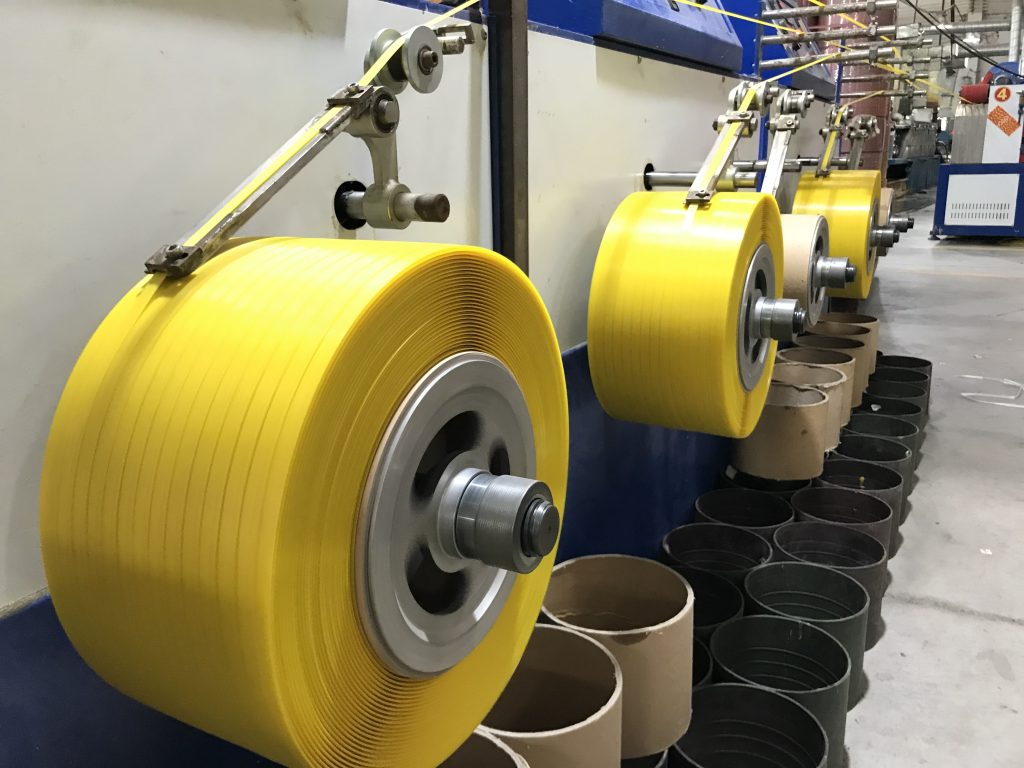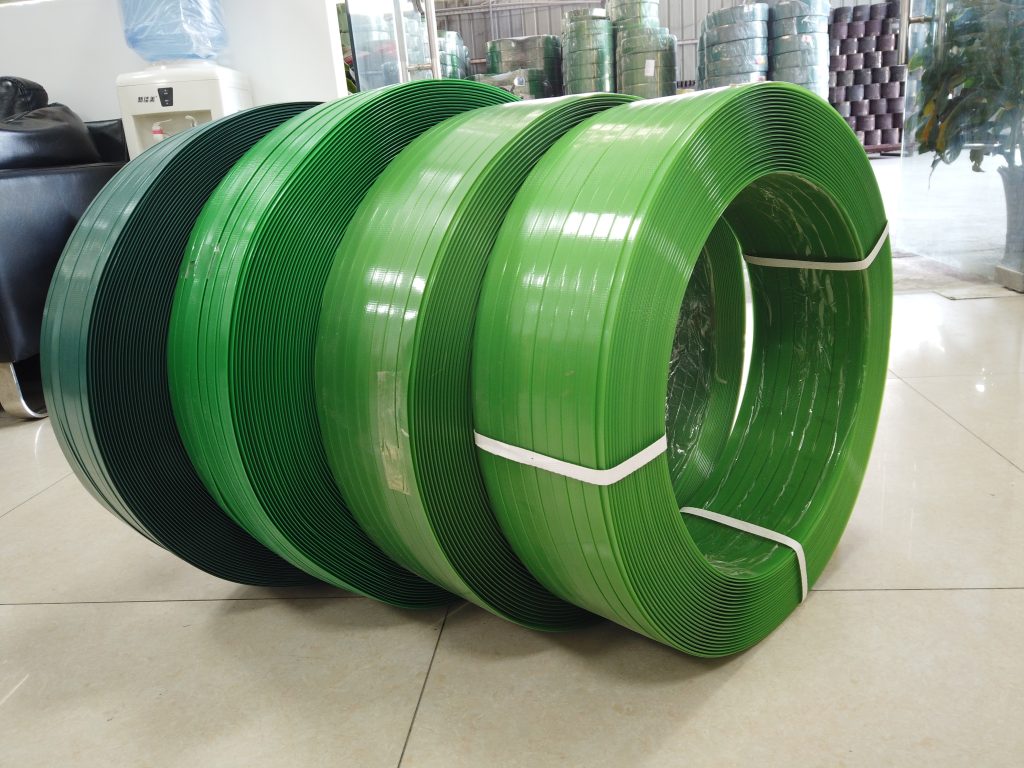PET Strap Application Guide: Avoid Common Mistakes Easily
2025-07-18
Want to keep heavy stuff safe? Learn how to use PET straps the right way and skip pricey packaging slip-ups with this super easy guide!
What Are PET Straps and Why Are They a Big Deal?
PET straps, also called polyester strapping bands or plastic steel belts, are super important for packing stuff. They’re a strong, cheap swap for old-school steel straps. They work great in places like ceramics, paper, chemical fibers, cotton, tobacco, and wood industries.
What’s a PET Strap?
Plastic Steel (PET) Strapping Bands: Also known as PET straps, these are high-strength alternatives to steel straps. They’re used in tons of industries. PET straps have steel-like pulling power and can stretch a bit without breaking. They hold 5% tension without loosening and stretch 5% under big bumps, keeping your cargo safe.
Why PET Straps Are Awesome
PET straps are getting super popular for good reasons. Their cool features make them fit lots of jobs.
Super Tough and Strong
PET straps are really strong and stick together well when sealed. They don’t bend or break easily, even when poked. This makes them perfect for heavy stuff during long trips or storage.
Stands Up to Weather and Sun
PET straps stay strong from -50℃ to 100℃. They handle all kinds of weather, don’t mind water, and won’t rust. That’s great for keeping things safe outdoors.
Cheaper Than Steel Straps
PET straps are way lighter—only 1/6 the weight of steel straps. They cost less per foot too. One ton of PET strap is as long as six tons of steel strap, saving tons of money for businesses.
Common Goofs to Avoid with PET Straps
Even though PET straps are awesome, messing up how you use them can cause trouble or damage.
Picking the Wrong Strap Type or Size
Choosing the right strap for your job is key.
Wrong Strength for Your Load
Manual bands hold about 50kg. General bands handle 70-100kg. Lightweight bands do 100-120kg, and transparent bands manage 120-150kg. If you pick a strap too weak for heavy stuff, it might snap during shipping.
Tools That Don’t Match
Some folks forget to check if their tools work with their strap size or material. For example, the strap tensioner supports wide strapping bands from 12 to 19 mm. Using the wrong size makes it tough to strap right.
Messing Up the Tightness
If you don’t tighten straps just right, your load could wobble. Too tight, and you might crush delicate stuff. Too loose, and things shift around during transport.
Forgetting Edge Protection
PET straps have sharp edges that can hurt fragile items. Brown Paper Edge Protector Corner Protectors help keep packages strong and stop them from collapsing, especially for stuff like ceramics or electronics.
Step-by-Step Guide to Using PET Straps Right
Follow these steps to make your PET straps work like a charm:
Getting Your Stuff Ready
Grab your tools: a manual tensioner, packing pliers/sealer, metal buckles (if needed), and your PET strap roll. Make sure your workspace is clean and steady.
Securing Your Load the Smart Way
Good technique keeps things safe and easy.
Placing the Strap Around Your Load
Run the strap through the forklift holes on the pallet. Wrap it around your goods. Put the shorter end under and the longer end on top so they overlap.
Tightening with Tools
Slide both strap ends into the tensioner. Rock the lever back and forth until it’s tight. Pneumatic balers are faster for big jobs using air power.
Sealing with Clips or Heat
For manual sealing, use galvanized metal buckles. Put the buckle on the overlapping strap ends before or after tightening, then crimp it with a hand tool. For auto systems, friction welding makes strong seals quick.
Cool Tools and Extras for PET Strapping
Picking the right tools makes strapping faster and better.
Must-Have Hand Tools for Manual Jobs
Manual tools are great for smaller setups:
Packing Pliers and Tensioners
Packing pliers manual with strong interlocking force team up with strap tensioners for 12–19mm bands. They’re perfect for packing on the go.
Steel Buckles for Heavy Stuff
Galvanized steel buckles boost holding power with PET straps. They’re awesome for big loads like metal parts or machines.
Fancy Gear for Big Jobs
Pneumatic balers use air power for speed. They work with PP or PET tapes from 13–25mm wide, great for busy spots like warehouses or factories.
How to Store and Care for PET Straps
Taking care of your straps keeps them working great:
Keep Away from Water and Sun
Store rolls in dry places, out of direct sunlight. Too much heat can mess up the straps over time.
Use Older Rolls First
Use a first-in, first-out (FIFO) system. This stops old rolls from sitting too long and losing strength.
Fixing Common PET Strap Problems
Sometimes things go wrong. Here’s how to fix them:
- Strap Snapping: Check if the strap’s strength matches your load. Swap to a stronger band if needed.
- Loose Loads: Tighten more with your tensioner. Test the load by nudging it to make sure it’s secure.
- Tool Jams: Make sure your strap width fits your tool (12–19mm for most manual ones). Clean tools weekly to avoid gunk buildup.
- Damaged Goods: Add Brown Paper Edge Protector Corner Protectors for fragile stuff like ceramics to avoid strap cuts.
Why Quality Counts: Pick a Great Supplier
Not all PET straps are the same. Good ones have consistent thickness, smooth edges, and no fraying. These show the maker cares about quality, which matters for tough jobs.
Why Chuangyi Is a Top Choice
Foshan Weide Chuangyi Packaging Materials Co., Ltd., a subsidiary of Foshan Xinmingyi Packaging Materials Co., Ltd., has been rocking the packaging world since 2004. They’ve got a huge 10,000-square-meter factory and make awesome PP/PET strapping belts. You can even add custom colors or logos. Their stuff works great for logistics, electronics, ceramics, and hardware.
Chuangyi’s Cool Packaging Stuff
Check out their Machine Stretch Film and Hand Stretch Film at Chuangyi’s Winding Film Series website page. They also have galvanized steel buckles for PP or PET straps, Brown Paper Edge Protector Corner Protectors, pneumatic balers, and electric balers—all on Chuangyi Products website page.
Busting Myths About PET Straps
There’s some wrong info out there that can trick you:
Myth: All Straps Work the Same
Nope! Different straps have different strengths and stretch levels. You gotta pick the right one for your job.
Myth: Thicker Straps Are Always Better
Not true! A thin, high-quality PET strap can beat a thicker, cheap one. It’s about the material, not just size.
Myth: Manual Strapping Is Cheaper
Hand strapping seems cheap at first. But mistakes or damage can cost more than using machines with strong straps.
Picking the Best PET Strap for You
Think about what you need:
Comparing Strength, Cost, and Ease
PET straps are super duper tough but might need tools. Lighter straps like PP are easier for small jobs but not as strong.
Making a Smart Pick
Look at your load size, weight, and shipping setup. Talk to experts like Chuangyi—they’ll help you find the perfect fit.
Frequently Asked Questions
Q1: What’s better—PP strap or PET strap?
It depends! PP straps are for lighter stuff. PET straps are stronger, like steel, but won’t rust or cut. For heavy loads like tiles or metals, pick PET.
Q2: Can I use manual tools with all PET straps?
Not always. Make sure your strap width matches your tool. Manual tensioners usually work with 12–19mm bands only.
Q3: Are PET straps good for the environment?
Yep! They’re recyclable and non-toxic. No special disposal needed, making them a great swap for rusty steel straps.


